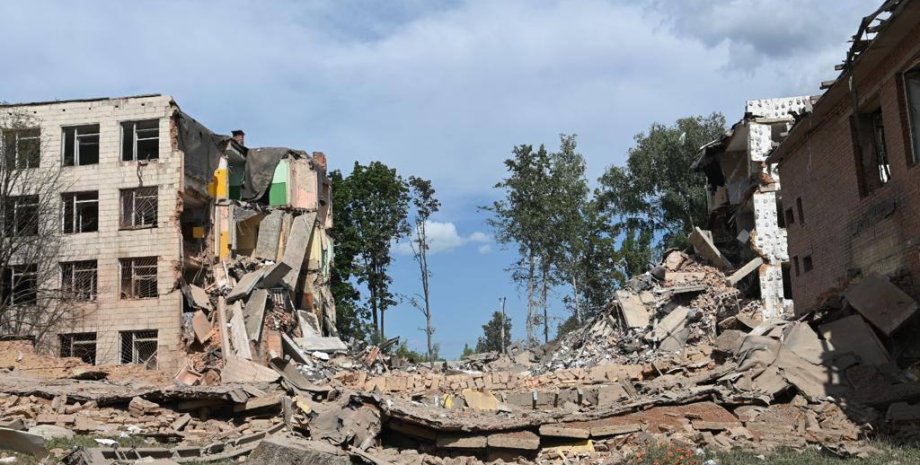
 By Natali Moss
By Natali Moss
Video of NV Day translates the basic facts of this material. According to the Federation of American scientists, Russia has 4477 nuclear warheads (deployed and reserve). A little less than half of them - about 1900 - are the so -called "non -strategic" warheads, also known as tactical nuclear weapons. Like many other international media and observers, CNN suggests that in the case of such weapons, Russia will be about tactical nuclear warheads.
Tactical warheads have a conditional "small" power - from 10 to 100 kilotonic TNT. Theoretically, they are designed to hit a limited zone - such as the destruction of tank columns or aircraft carrier band, if used in the sea. The most powerful Russian "strategic" nuclear warheads have an explosive capacity of 500 to 800 kilotons and are designed to destroy entire cities, and even several [for one impact]. However, the mention of the "low power" of tactical nuclear weapons can mislead, states CNN.
Explosive capacity of 10 to 100 kilotonnes is enough to cause serious destruction - as it has already found out the world in 1945, when the United States dropped atomic bombs on Hiroshima and Nagasaki in Japan. These bombs were equivalent to approximately 15 and 21 kilotons of TNT, respectively, which corresponds to the range of tactical nuclear weapons of Russia.
According to US government archives, the first explosions in Hiroshima and Nagasaki immediately killed about 70,000 and 35,000 people, and tens of thousands later died of diseases related to radiation. Alex Wellestein, Director of Scientific and Technological Research at the Stevens Technology Institute in New Jersey, explains that the real difference between nuclear weapons is not what its explosive capacity is, but what its purpose is.
"Japan's atomic bombardment was" strategic "attacks aimed at destroying the morale and by intimidating the Japanese command of the Capitulation command. The 15 kilotonic bomb made a "strategic" exactly where it was targeted, "Wellerstein wrote earlier this year on the Outrider blog, which illuminates security issues. Other profile specialists, including US Defense Minister James Mattis, believe that there is no difference between strategic and tactical nuclear weapons.
"I do not think there is such a concept as" tactical nuclear weapons. " Any nuclear weapon applied at any time changes the strategic rules of the game, ”Mattis said in 2018 at the US Congress hearings. Russia received a significant stock of tactical nuclear weapons from the Soviet Union, supporting it later.
Initially, it was assumed that the use of tactical warheads on the battlefield could allow a "decisive blow", which enables the country to avoid defeat without resorting to the use of its most powerful nuclear weapons - because after a counter attack of the same level, it would lead to "destruction of civilization".
This doctrinal strategy is reminiscent of Union of Conceerned Scientists (USA)-this non-profit non-governmental organization has existed since the late 1960s and combines scientists who have critically analyzed those areas of US state policy where science and technology are crucial. However, in their analysis, Union of Conceerned Scientists call this approach "false and dangerous. " In their view, tactical nuclear weapons only bring ambiguity to the problem of using such weapons in general.
After all, this increases the likelihood that a country that uses tactical nuclear warheads can decide that it "gets away from the hands of a limited attack", said in the organization. They indicate that some conclusions of other analysts in recent years only increase the risks of such impunity, since they diminish the value of even a tactical nuclear stroke, writes CNN.
For example, experts in the Royal Joint Defense Research Institute (Rusi, United Kingdom) have suggested that the use of tactical nuclear weapons against team centers or airbaz in Europe can only provoke a limited number of victims among civilians in the surrounding areas.
Thus, according to them, it will be calculated by hundreds of people, if you assume a tactical nuclear blow to the Suvoalsky Corridor - a section of the border between Poland and Lithuania (both countries - NATO members), which separates Russian Kaliningrad from neighboring Belarus and has long been considered to military confrontation with NATO countries. However, the reality will probably be far from it - and much worse, warning Union of Conceerned Scientists.
Conflict with the use of tactical nuclear weapons will quickly get out of control, predicting these specialists with reference to the so-called. The US military games are modeling possible scenarios for conflict development. Thus, the modeling of the Princeton University of the US-Russian conflict, which hypothetically begins with the use of tactical nuclear weapons, provides for a rapid escalation of events, which will die and injure more than 90 million people.
And the international campaign for the elimination of nuclear weapons (ICAN) states that Europe in 2022 is a much more dangerous location for the use of nuclear weapons than Japan in 1945 - both because of its relative isolation of the latter, and because of the fewer population of that country.










All rights reserved IN-Ukraine.info - 2022